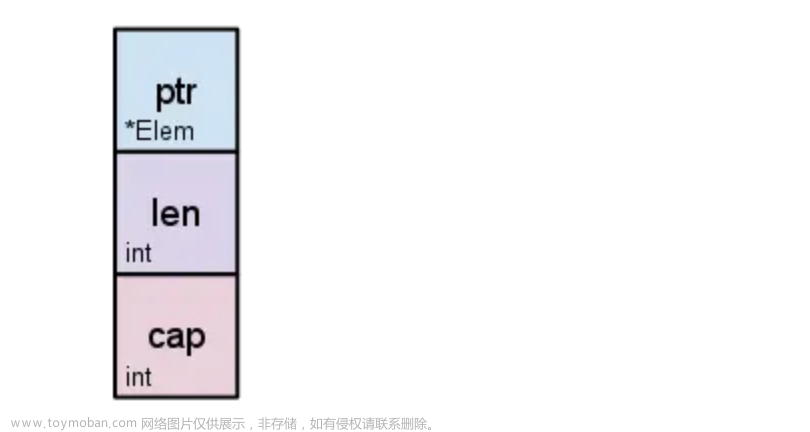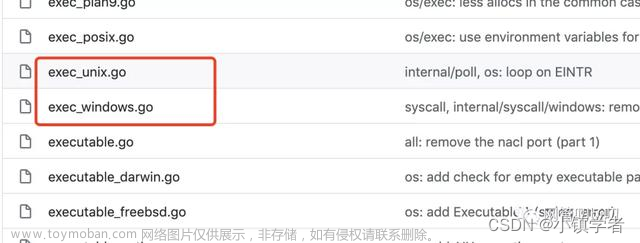测试工具 :go test
go test 本身可以携带很多的参数,熟悉这些参数,可以让我们的测试过程更加方便。
1 运行整个项目的测试文件
$ go test
PASS
ok _/home/wangbm/golang/math 0.003s
2 只运行某个测试文件
math_test.go
math.go 是一对,缺一不可,前后顺序可对调。
$ go test math_test.go math.go
ok command-line-arguments 0.002s
3 加 -v 查看详细的结果
$ go test math_test.go math.go
=== RUN TestAdd
TestAdd: main_test.go:22: the result is ok
TestAdd: main_test.go:22: the result is ok
TestAdd: main_test.go:22: the result is ok
TestAdd: main_test.go:22: the result is ok
TestAdd: main_test.go:22: the result is ok
--- PASS: TestAdd (0.00s)
PASS
ok command-line-arguments 0.003s
4 只测试某个函数
-run 支持正则,如下例子中 TestAdd,如果还有一个测试函数为 TestAdd02,那么它也会被运行。
$ go test -v -run="TestAdd"
=== RUN TestAdd
TestAdd: math_test.go:22: the result is ok
TestAdd: math_test.go:22: the result is ok
TestAdd: math_test.go:22: the result is ok
TestAdd: math_test.go:22: the result is ok
TestAdd: math_test.go:22: the result is ok
--- PASS: TestAdd (0.00s)
PASS
ok _/home/wangbm/golang/math 0.003s
5 生成 test 的二进制文件:加 -c 参数
$ go test -v -run="TestAdd" -c
$
$ ls -l
total 3208
-rw-r--r-- 1 root root 95 May 25 20:56 math.go
-rwxr-xr-x 1 root root 3272760 May 25 21:00 math.test
-rw-r--r-- 1 root root 525 May 25 20:56 math_test.go
6 执行这个 test 测试文件:加 -o 参数
$ go test -v -o math.test
=== RUN TestAdd
TestAdd: math_test.go:22: the result is ok
TestAdd: math_test.go:22: the result is ok
TestAdd: math_test.go:22: the result is ok
TestAdd: math_test.go:22: the result is ok
TestAdd: math_test.go:22: the result is ok
--- PASS: TestAdd (0.00s)
=== RUN TestAum
TestAum: math_test.go:30: 6
--- PASS: TestAum (0.00s)
PASS
ok _/home/wangbm/golang/math 0.002s
7 测试安装/重新安装 依赖包,而不运行代码:加 -i 参数
# 这里没有输出
$ go test -i
单元测试
准备两个 Go 文件::
E:\TEXT\test_go\test\math\math.go
package math
func Add(x, y int) int {
return x + y
}
E:\TEXT\test_go\test\math\math_test.go
package math
import "testing"
func TestAdd(t *testing.T) {
t.Log(Add(1, 2))
}
然后使用 go test 工具去执行:
PS E:\TEXT\test_go\test\math> go test .
ok test/math 0.365s
PS E:\TEXT\test_go\test\math>
PS E:\TEXT\test_go\test\math> go test . -v
=== RUN TestAdd
math_test.go:6: 3
--- PASS: TestAdd (0.00s)
PASS
ok test/math 0.359s
PS E:\TEXT\test_go\test\math>
从上面这个例子中,可以总结中几点 Go 语言测试框架要遵循的规则:
- 单元测试代码的 go文件必须以
_test.go结尾,而前面最好是被测试的文件名(不过并不是强制的),比如要测试 math.go 测试文件名就为 math_test.go。 - 单元测试的函数名必须以Test开头,后面直接跟要测试的函数名,比如要测试 Add函数,单元测试的函数名就得是 TestAdd。
- 单元测试的函数必须接收一个指向
testing.T类型的指针,并且不能返回任何值。
表组测试
Add(1, 2) 是一次单元测试的场景,而 Add(2, 4) ,Add(3, 6) 又是另外两种单元测试的场景。
对于多种输入场景的测试,我们可以同时放在 TestAdd 里进行测试,这种测试方法就是表组测试。
修改 E:\TEXT\test_go\test\math\math_test.go 如下:
package math
import "testing"
func TestAdd(t *testing.T) {
sum := Add(1, 2)
if sum == 3 {
t.Log("the result is ok")
} else {
t.Fatal("the result is wrong")
}
sum = Add(2, 4)
if sum == 6 {
t.Log("the result is ok")
} else {
t.Fatal("the result is wrong")
}
}
PS E:\TEXT\test_go\test\math> go test . -v
=== RUN TestAdd
math_test.go:8: the result is ok
math_test.go:15: the result is ok
--- PASS: TestAdd (0.00s)
PASS
ok test/math 0.356s
PS E:\TEXT\test_go\test\math>
如果输入的场景实在太多(比如下面用的五组输入),用上面的方法,可能需要写很多重复的代码,这时候可以利用表格测试法。
E:\TEXT\test_go\test\math\math_test.go
package math
import (
"fmt"
"testing"
)
type TestTable struct {
xarg int
yarg int
}
func TestAdd(t *testing.T) {
tables := []TestTable{
{1, 2},
{2, 4},
{4, 8},
{5, 10},
{6, 12},
}
for _, table := range tables {
result := Add(table.xarg, table.yarg)
if result == (table.xarg + table.yarg) {
t.Log("" + fmt.Sprintf("the result is ok %d", result))
} else {
t.Fatal("the result is wrong")
}
}
}
PS E:\TEXT\test_go\test\math> go test . -v
=== RUN TestAdd
math_test.go:25: the result is ok 3
math_test.go:25: the result is ok 6
math_test.go:25: the result is ok 12
math_test.go:25: the result is ok 15
math_test.go:25: the result is ok 18
--- PASS: TestAdd (0.00s)
PASS
ok test/math 0.351s
PS E:\TEXT\test_go\test\math>
理清 Go 中晦涩难懂的寻址问题
什么叫可寻址?
可直接使用 & 操作符取地址的对象,就是可寻址的(Addressable)。
E:\TEXT\test_go\test\math\math.go
package math
import "fmt"
func Unit() {
name := "heihie"
fmt.Println(&name)
}
E:\TEXT\test_go\test\math\math_test.go
PS E:\TEXT\test_go\test\math> go test . -v
=== RUN TestUnit
0xc0000505a0
--- PASS: TestUnit (0.00s)
PASS
ok test/math 0.313s
PS E:\TEXT\test_go\test\math>
程序运行不会报错,说明 name 这个变量是可寻址的。
但不能说 “iswbm” 这个字符串是可寻址的。
“iswbm” 是字符串,字符串都是不可变的,是不可寻址的,后面会介绍到。
在开始逐个介绍之前,先说一下结论:
-
指针可以寻址:
&Profile{} -
变量可以寻址:
name := Profile{} -
字面量通通不能寻址:
Profile{}
哪些是可以寻址的?
变量:&x
func main() {
name := "iswbm"
fmt.Println(&name)
// output: 0xc000010200
}
指针:&*x
type Profile struct {
Name string
}
func main() {
fmt.Println(unsafe.Pointer(&Profile{Name: "iswbm"}))
// output: 0xc000108040
}
数组元素索引: &a[0]
func main() {
s := [...]int{1,2,3}
fmt.Println(&s[0])
// output: xc0000b4010
}
切片
func main() {
fmt.Println([]int{1, 2, 3}[1:])
}
切片元素索引:&s[1]
func main() {
s := make([]int , 2, 2)
fmt.Println(&s[0])
// output: xc0000b4010
}
组合字面量不可寻址字段属性可寻址
所有的组合字面量都是不可寻址的,就像下面这样子
type Profile struct {
Name string
}
func new() Profile {
return Profile{Name: "iswbm"}
}
func main() {
fmt.Println(&new())
// cannot take the address of new()
}
注意上面写法与这个写法的区别,下面这个写法代表不同意思,其中的 & 并不是取地址的操作,而代表实例化一个结构体的指针。
type Profile struct {
Name string
}
func main() {
fmt.Println(&Profile{Name: "iswbm"}) // ok
}
虽然组合字面量是不可寻址的,但却可以对组合字面量的字段属性进行寻址(直接访问)
type Profile struct {
Name string
}
func new() Profile {
return Profile{Name: "iswbm"}
}
func main() {
fmt.Println(new().Name)
}
哪些是不可以寻址的?
常量
import "fmt"
const VERSION = "1.0"
func main() {
fmt.Println(&VERSION)
}
字符串
func getStr() string {
return "iswbm"
}
func main() {
fmt.Println(&getStr())
// cannot take the address of getStr()
}
函数或方法
func getStr() string {
return "iswbm"
}
func main() {
fmt.Println(&getStr)
// cannot take the address of getStr
}
基本类型字面量
字面量分:基本类型字面量 和 复合型字面量。
基本类型字面量,是一个值的文本表示,都是不应该也是不可以被寻址的。
func getInt() int {
return 1024
}
func main() {
fmt.Println(&getInt())
// cannot take the address of getInt()
}
map 中的元素
字典比较特殊,可以从两个角度来反向推导,假设字典的元素是可寻址的,会出现 什么问题?
- 如果字典的元素不存在,则返回零值,而零值是不可变对象,如果能寻址问题就大了。
- 而如果字典的元素存在,考虑到 Go 中 map 实现中元素的地址是变化的,这意味着寻址的结果也是无意义的。
基于这两点,Map 中的元素不可寻址,符合常理。
func main() {
p := map[string]string {
"name": "iswbm",
}
fmt.Println(&p["name"])
// cannot take the address of p["name"]
}
搞懂了这点,你应该能够理解下面这段代码为什么会报错啦~
E:\TEXT\test_go\test\math\math.go
package math
import "fmt"
type Person struct {
Name string
Email string
}
func Unit() {
m := map[int]Person{
1: Person{"Andy", "1137291867@qq.com"},
2: Person{"Tiny", "qishuai231@gmail.com"},
3: Person{"Jack", "qs_edu2009@163.com"},
}
//编译错误:cannot assign to struct field m[1].Name in map
// m[1].Name = "Scrapup"
fmt.Println(m[1].Name)
}
E:\TEXT\test_go\test\math\math_test.go
package math
import (
"fmt"
"testing"
)
func TestUnit(t *testing.T) {
Unit()
}
func TestCc(t *testing.T) {
fmt.Println("hello")
}
PS E:\TEXT\test_go\test\math> go test -v -run="TestUnit"
=== RUN TestUnit
Andy
--- PASS: TestUnit (0.00s)
PASS
ok test/math 0.339s
PS E:\TEXT\test_go\test\math>
解决map修改值的方法文章来源:https://www.toymoban.com/news/detail-726042.html
package math
import "fmt"
type Person struct {
Name string
Email string
}
func Unit() {
m := map[int]Person{
1: Person{"Andy", "1137291867@qq.com"},
2: Person{"Tiny", "qishuai231@gmail.com"},
3: Person{"Jack", "qs_edu2009@163.com"},
}
// 创建一个新的Person
newPerson := Person{Name: "Scrapup", Email: "1137291867@qq.com"}
// 创建一个新的map
newMap := make(map[int]Person)
// 遍历原始map
for k, v := range m {
// 如果键值不等于1,则复制元素
if k != 1 {
newMap[k] = v
} else {
// 否则,添加新的Person
newMap[k] = newPerson
}
}
// 将新的map赋值给原始map
m = newMap
//打印结果
for k, v := range m {
fmt.Printf("key is %d, value is %v)\n", k, v)
}
}
数组字面量进行切片操作
数组字面量是不可寻址的,当你对数组字面量进行切片操作,其实就是寻找内部元素的地址,下面这段代码是会报错的。文章来源地址https://www.toymoban.com/news/detail-726042.html
func main() {
fmt.Println([3]int{1, 2, 3}[1:])
// invalid operation [3]int literal[1:] (slice of unaddressable value)
}
到了这里,关于Golang 测试工具 go test的文章就介绍完了。如果您还想了解更多内容,请在右上角搜索TOY模板网以前的文章或继续浏览下面的相关文章,希望大家以后多多支持TOY模板网!








